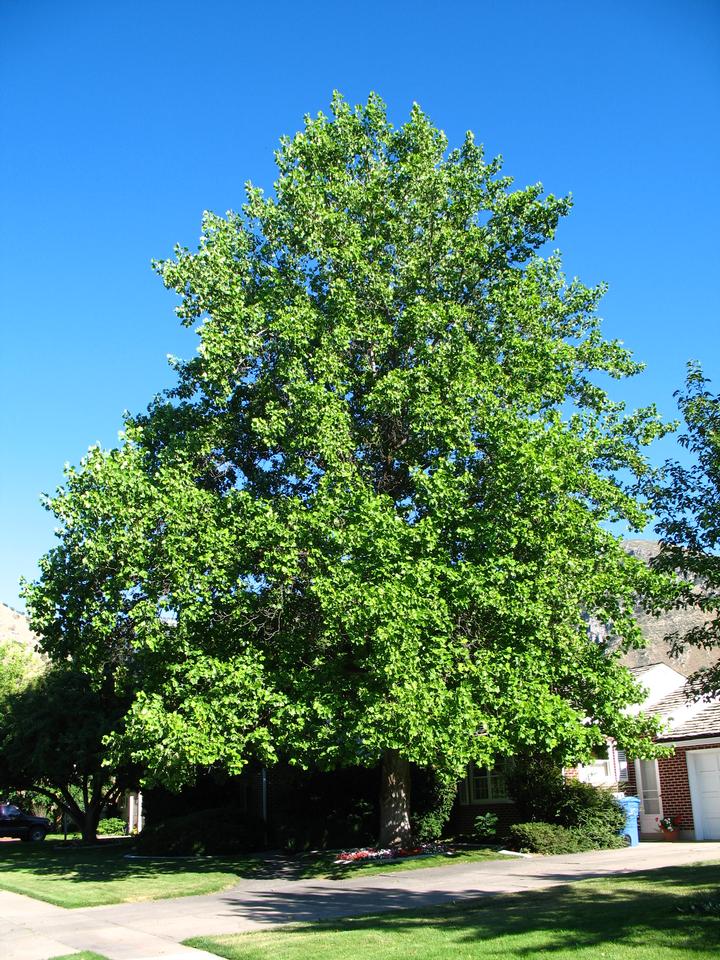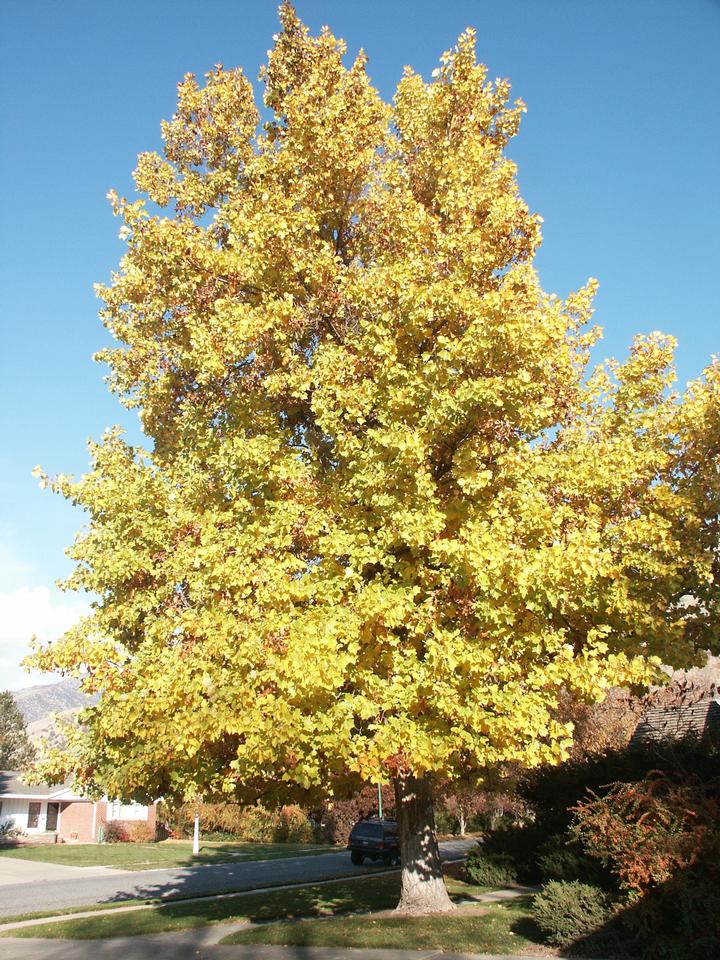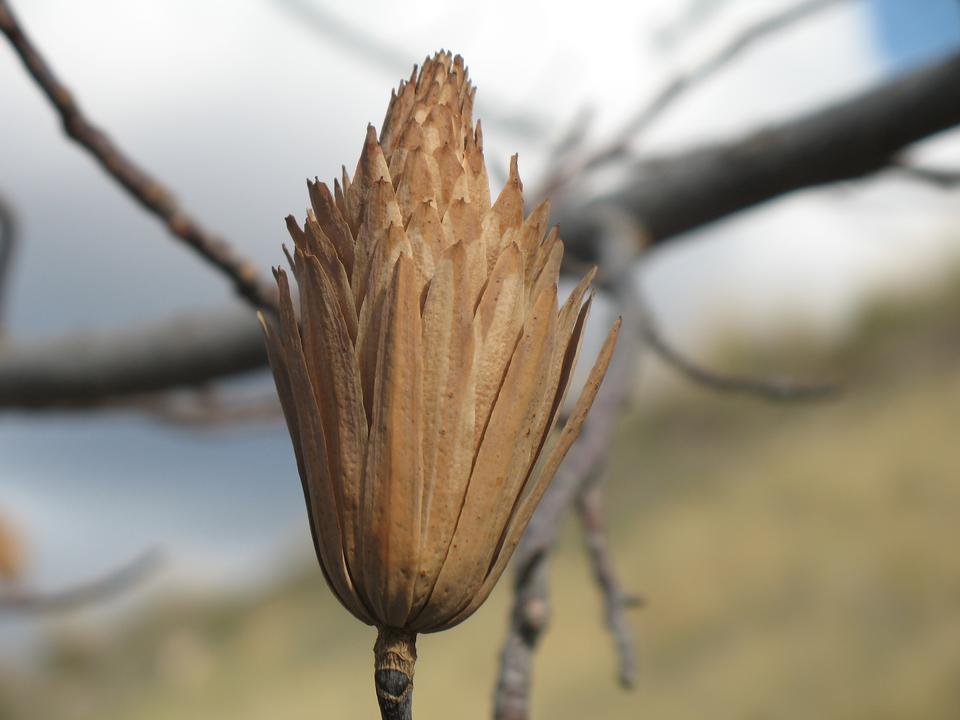Yellow-poplar or Tuliptree or Tulip-poplar
Liriodendron tulipifera
Magnoliaceae - Magnolia
Description
Leaves: Alternate; simple; 4" to 6" across; deciduous; usually 4-lobed; leaf base and tip flat, leaf shape very distinctive; entire margin; glabrous; bright green with nice yellow fall color; petiole 2" to 4" long; .
Twigs/buds: Twigs fairly stout; red-brown; pith divided into chambers. Terminal buds about 1/2" long, covered with 2 duck-bill like scales; lateral buds much smaller.
Flowers/fruit: Perfect flowers, large, green-yellow,; appear in May or June after the leaves are open. Fruit an aggregate of deciduous samaras; 2-1/2" to 3" long; held upright.
Bark: Dark green and smooth on young stems; becoming thick, ash-gray, furrowed, with rough ridges.
Wood: Very important; light yellow sapwood; light yellow to dark brown heartwood; even-textured; diffuse-porous; used for furniture, interior finish, boxes, pallets, crates, plywood, etc.; commonly available in lumber yards where it is usually called poplar.
General: Native to the southeastern U.S. as far north as southeast Missouri, and as far northeast as Vermont. Not a true poplar. Shade intolerant.
Landscape Use: Large tree that is not common in Utah but has been planted enough to have proven itself. Has a good, strong, pyramidal habit and bright green, unusually shaped leaves, and nice fall color that make the tree very attractive. The flowers and fruit are interesting but the seeds can be a messy. Zones 4-9.
Cultivars: 'Ardis', 'Arnold', 'Aureomarginatum', 'Compactum', 'Emerald City', 'Fastigiatum', 'Integrifolium', 'Mediopictum'.
Characteristics
General
| Family | Magnoliaceae - Magnolia |
|---|---|
| Cultivar Availability | Yes |
| Hardiness Zone | 4-9 |
| Type | Broadleaf |
| Utah Native | No |
Growth
| Growth Rate | High |
|---|---|
| Mature Height | High |
| Longevity | High |
| Is Good Under Power Lines | No |
| Crown Shapes | Oval |
Ornamental
| Bark | No |
|---|---|
| Fall Color | Yes |
| Flowers | Yes |
| Foliage | Yes |
| Fruit | Yes |
Tolerance
| Shade | Medium |
|---|---|
| Salt | Low |
| Drought | Medium |
| Poor Drainage | Medium |
| Alkalinity | Medium |
| Transplanting | Medium |















